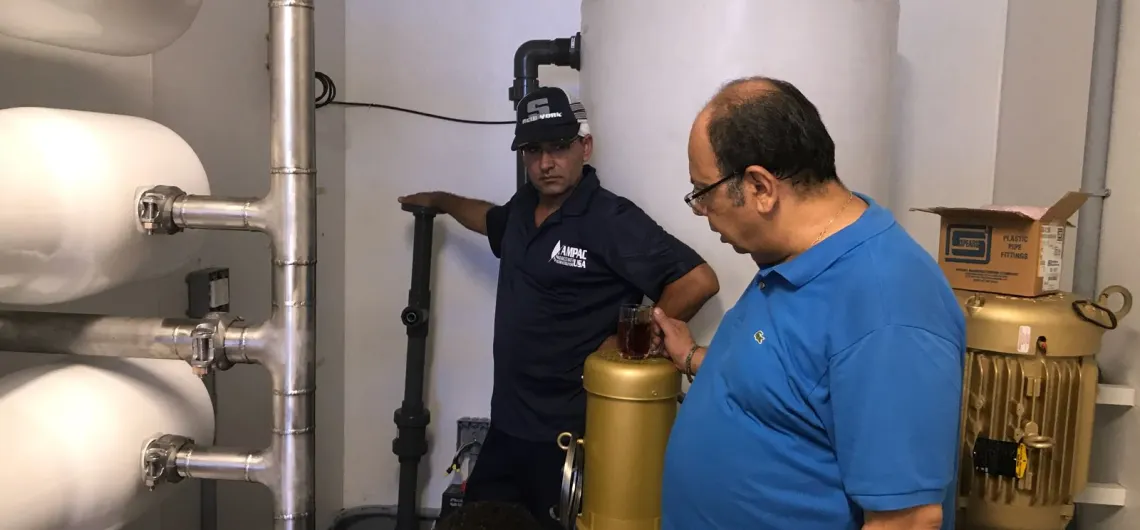In an era where water purity is not just a luxury but a crucial necessity for industries, understanding and investing in top-tier Industrial Reverse Osmosis (RO) Systems has become paramount. This comprehensive guide is meticulously crafted to assist businesses in navigating the intricate landscape of RO systems, ensuring that your investment not only meets but exceeds industry standards in 2024.
Understanding Industrial RO Systems
At the heart of industrial water purification, RO systems employ a high-pressure pump to force water through semi-permeable membranes, effectively removing dissolved salts, organic substances, and other impurities. This process is pivotal for industries ranging from pharmaceuticals to food and beverage, where water quality directly impacts product integrity and safety.
Key Components of RO Systems
An efficient Reverse Osmosis system is a symphony of precision-engineered components working in harmony. The membrane module, the system’s core, is where the desalination process unfolds. The high-pressure pump propels water through the membranes, while pre-treatment filters ensure the longevity and efficiency of the system by removing sediments and chlorine that could damage the membrane. Post-treatment units adjust the water’s pH and remineralize it, if necessary, to suit specific industrial applications.
Selecting the Right Industrial RO System for Your Industry
Choosing the ideal RO system hinges on a thorough understanding of your industry’s specific water purity requirements. Factors such as water source, contaminant types, and desired flow rate play pivotal roles in this decision-making process. For instance, industries dealing with high levels of biological contaminants might require advanced pre-treatment solutions, while those in regions with brackish water sources might need systems specialized in handling high salinity levels.
System Capacity and Scalability
Industrial RO systems vary widely in capacity, from compact units producing a few gallons per minute to large-scale installations capable of thousands of gallons per hour. Assessing current and future water demand is crucial, allowing for a system that not only meets today’s needs but is also scalable to accommodate future expansion.
Read: Brackish Water Reverse Osmosis Systems: Enhancing Water Purification
Energy Efficiency and Sustainability
In 2024, the emphasis on sustainability and energy efficiency in industrial operations is more pronounced than ever. Modern RO systems come equipped with energy recovery devices and low-energy membranes, significantly reducing the energy footprint of water purification processes. Opting for systems that incorporate these technologies not only aligns with global sustainability goals but also translates into substantial long-term cost savings.
Maintenance and Support
The longevity and performance of an RO system are directly tied to regular maintenance and the quality of support services. Systems designed for easy access to components and equipped with smart monitoring technologies allow for proactive maintenance, minimizing downtime. Partnering with suppliers that offer comprehensive support, from installation to routine check-ups, ensures your system remains in optimal condition.
Read: Water Stress: A Global Problem That’s Getting Worse
Certification and Compliance
Ensuring that your chosen RO system complies with relevant industry standards and certifications is not just a matter of regulatory adherence but also a testament to the system’s quality and reliability. Certifications from bodies such as the NSF International or the American Water Works Association (AWWA) are indicative of systems that meet stringent health, safety, and environmental standards.
Cost Considerations and ROI
While the initial investment in a high-quality RO system may be substantial, the focus should be on the long-term return on investment (ROI). Systems that offer lower operating costs, reduced maintenance needs, and longer lifespans can significantly offset the initial outlay. Additionally, the impact of high-quality water on product quality, compliance, and brand reputation can contribute to substantial indirect savings and revenue growth.
Innovations in RO Technology
Staying abreast of the latest advancements in RO technology is crucial for making an informed decision. Innovations such as nanocomposite membranes and AI-driven optimization offer unprecedented efficiency and performance, setting new standards in water purification. These technologies not only enhance water quality but also contribute to the system’s adaptability to varying water conditions and demand.
AMPAC USA is a prominent distributor and supplier of Industrial Reverse Osmosis Systems, catering to a wide range of industrial water purification needs. Their product lineup includes Industrial Reverse Osmosis systems with capacities ranging from 6,000 to 100,000 Gallons Per Day (GPD), designed to meet the high-volume water purification requirements of various industrial sectors. AMPAC USA’s systems are engineered to efficiently remove contaminants from water, making it suitable for industrial applications. The company’s offerings emphasize reliability, efficiency, and the ability to handle large-scale water purification tasks, making them a go-to choice for industries seeking high-quality water purification solutions.
Conclusion
Investing in an industrial RO system is a strategic decision that goes beyond mere operational requirement; it is a commitment to quality, sustainability, and efficiency. By considering the factors outlined in this guide, businesses can ensure that their investment in RO technology is sound, sustainable, and strategically aligned with their long-term goals. As we move further into 2024, the importance of adopting advanced, efficient, and reliable water purification systems like RO cannot be overstated, making it a pivotal component of industrial success.










